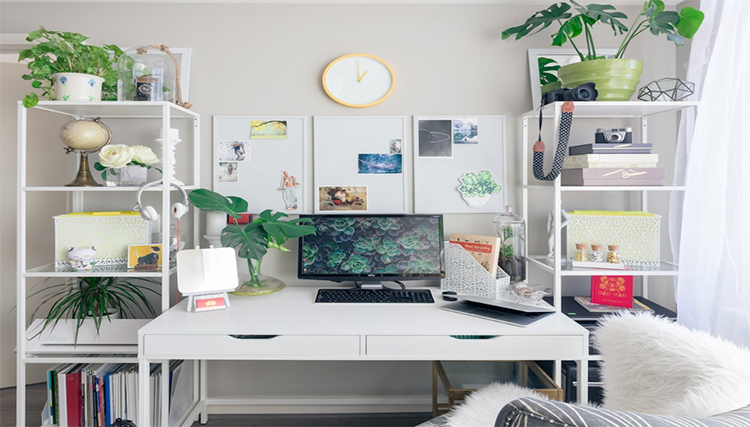When it comes to studying effectively and efficiently, few factors are as crucial as the space in which we choose to do it. Well-designed study space can mean the difference between endless distraction and productive concentration. It can shape the course of your academic journey, providing the solitude required for deep thinking or the energy needed for creative brainstorming. Whether you’re a student trying to ace your exams or a professional aiming for career advancement, curating the perfect study environment can have a transformative impact on your learning outcomes. In this comprehensive guide, we will explore how to create a study space that not only suits your needs but also enhances your ability to absorb, comprehend, and retain information.

1. Choose the Right Location
The location of your study space significantly influences your capacity to focus. It’s important to choose a location that is quiet and free from distractions. This could be a dedicated office room, a secluded corner in your home, or even a local library. Ensure this space is solely for studying to associate it with productivity and learning.
Lighting plays an essential role in the location of your study space. Natural light has been found to enhance mood and cognition, so a space near a window can be beneficial. If natural light isn’t accessible, make sure the area is well-lit with suitable artificial light to reduce eye strain and maintain alertness.
2. Invest in a Comfortable Furniture
Comfortable furniture is an absolute necessity for any study space. The right chair can make long hours of studying more bearable, and a suitable desk can provide the space needed for books, laptops, and other study materials. Look for school chairs for sale that are ergonomically designed to support your back and promote good posture. Ensure that the height is appropriate for the desk or table you’ll be using.
In addition to a chair, the choice of desk or table is equally critical. It should be spacious enough to accommodate your study resources without feeling cluttered. Height is also an important consideration; it should align with your chair to allow a comfortable seating position and prevent strain on your neck and shoulders. Consider desks with built-in storage to keep your study materials organized and within reach. Remember, investing in quality furniture is a long-term investment in your comfort and productivity.
3. Personalize Your Space
Your study space should be a reflection of your personality and interests. Surround yourself with motivating and inspiring elements, such as motivational quotes, pictures of role models, or plants. These can help boost your mood and motivation while studying. Additionally, adding personal touches to your space can make it feel more inviting and comfortable.

Remember to consider the impact of color on your study space. Colors like blue and green have been linked to increased focus and productivity, while yellow can evoke feelings of happiness and creativity. Choose colors that resonate with you and incorporate them into your study space through decor or furniture.
4. Organize Your Study Materials
Keeping study materials well-organized is crucial for an efficient study environment. This involves arranging books, stationery, notebooks, and digital files in a way that allows easy access. Consider using storage solutions like bookshelves, drawer organizers, and cloud-based systems. Labeling resources help identify what you need, especially with multiple subjects or projects.
A well-organized study space saves time, reduces stress, and boosts productivity. Having a system to track assignments, deadlines, and important dates is beneficial. Calendars, planners, or digital apps can help manage responsibilities and time effectively. Organizing study materials streamlines the process and creates a clutter-free environment for focus and learning.
5. Control Noise Levels
The level of noise in your study space can significantly influence your ability to concentrate. Some people prefer complete silence, while others work best with some background noise. Recognize your preferences and control the noise levels accordingly. For total silence, consider using earplugs or noise-canceling headphones. If you prefer a public space like a library or café but find the chatter distracting, white noise or ambient sound apps can help mask the noise.
It’s also essential to manage noise distractions coming from your tech devices. Consider turning off notifications on your phone or computer to avoid interruptions during your study sessions. If internet browsing tends to sidetrack you, there are apps available that can temporarily block distracting websites. By taking control of the noise levels in your study environment, you can create a space that supports focused and productive study.
6. Set Up Proper Technology
In today’s digital age, technology is crucial for efficient studying. Make sure your study space has the necessary technical tools that match your style. This may include a laptop or desktop, printer, and reliable internet. Consider investing in high-quality peripherals like a comfortable keyboard, mouse, and larger monitor for extended reading. Keep your devices in good working order and organize your electronic files for easy access.
Consider the software aspect. Use tools and apps to enhance your learning experience, like digital note-taking apps, online research repositories, educational platforms, and project management tools. These often have reminders and deadline trackers to help you stay organized. Keep your software updated and use antivirus protection for your study materials.
7. Implement Break Spaces
Studying for long periods without breaks can lead to burnout and reduced productivity. Adding break spaces to your study environment can keep you energized and focused. This can be as simple as having a comfy chair or beanbag for short breaks, leisurely reading, or relaxation. Include activities like stretching, yoga, or meditation to recharge and maintain a healthy mind-body balance.
It’s also beneficial to have designated break times during your study sessions. Set a timer for every 45-60 minutes of studying, then take a 10-15 minute break to move around, hydrate, and refresh your mind. This practice can prevent mental fatigue and allow you to return to studying with renewed concentration. Remember, breaks are not a sign of laziness but rather an essential strategy for maintaining productivity and avoiding burnout.
Creating a space for studying is about finding the right balance between comfort and functionality. It involves curating an environment that supports your learning style, preferences, and needs. By implementing these tips and personalizing them to fit your unique study needs, you can design a space that enhances your academic or professional journey and sets you up for success. So, take the time to create your ideal study space, and watch as it transforms your productivity and achievements.

Leave a Reply